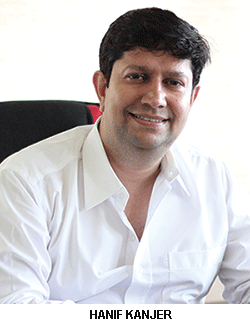 Panel discussions on the seminar circuit normatively discuss how education needs to evolve and keep abreast with the times. While in the educational discourse widespread criticism of the system is warranted, quite a few education institutions are evolving. Despite facing backlash from uninformed parents unhappy with change, some schools are doggedly marching ahead in their journey to discover, renew and deliver education fit for the future. Let’s examine how progressive schools are evolving:
Panel discussions on the seminar circuit normatively discuss how education needs to evolve and keep abreast with the times. While in the educational discourse widespread criticism of the system is warranted, quite a few education institutions are evolving. Despite facing backlash from uninformed parents unhappy with change, some schools are doggedly marching ahead in their journey to discover, renew and deliver education fit for the future. Let’s examine how progressive schools are evolving:
Transition to reflective learning. Hitherto, the teacher was the revered guardian of knowledge, and students/parents flocked to her. But with Google, YouTube, Khan Academy etc, this no longer holds true. Knowledge is now available at your finger-tips, and so the role of the teacher has to evolve from an imparter of knowledge to a facilitator in the learning process. Erudite teachers are now focussing on the ‘how’, instead of just the ‘what’. And in progressive schools there is a silent transition from teaching to learning.
Typically, in most schools, in a six-hour working day, five hours are spent in teaching, and one hour on co-curricular and sports education. When do we give children the time to think, reflect, and do? Worse, parents often push them for additional tuition. Where’s the time for the child to absorb, and learn through reflection?
Children need free time to reflect on what they’ve been taught. With their hectic schedules, they seldom get the time to do that. This needs to change, and in progressive schools we are putting innovative ideas into practice. We have designed a two-hour teaching, two-hour learning, and two-hour doing school day.
Addressing syllabus challenges. To be fair to teachers, with the pressure on them to complete the syllabus, they don’t want to digress from the prescribed curriculum. Nor do they encourage too many questions to add depth to learning.
Heavy reliance on textbooks and the prescribed syllabus automatically limits the scope of incorporating newer content into classroom teaching. Therefore, it’s important to question whether the textbook should be the primary learning resource. The obvious answer is in the negative. But due to prior conditioning, most schools rely on it as the main resource. Therefore, in putting together learning material for a class, it is crucial to focus on what skills need to be developed in children, and accordingly use multiple resources to make teaching-learning more engaging.
Unfortunately, in language learning most schools follow a cookie-cutter template by leading students through ten passages, and five essays. That’s not how language skills are developed! An evolved approach encourages students to reflect on what they have read, and express their interpretations rather than requiring the teacher to explain each paragraph.
Revisiting assessment objectives. Sadly, in traditional mainstream schools little thought and planning goes into what is to be assessed, and why it is to be assessed. Terminologies such as CCE, formative and summative assessments are randomly bandied around without proper understanding of their nature. Rarely do assessment exercises reflect upon the evolution of children. Neither do new parameters find their way into traditional assessment systems. How do you respond to parents who argue that their child’s scores are stagnant at 89 percent all through the year, with no improvement in grades? Too often, parents give little weight to development of personality traits, softskills, and initiative exhibited by children who participate in extra-curricular activities, or children who are helpful towards weaker classmates. As adults, we are aware that soft skills play a huge role in building strong leadership skills. Yet such traits don’t merit any mention in school report cards, except perhaps a standard one-line remark. We don’t pull plants from their roots to measure how well they are growing daily, and yet we subject young kids to quarterly examinations.
Encouraging peer learning. Typical parental advice to children is ‘don’t teach your friend anything you know, else he will score more marks than you’! That is an outdated attitude. In fact, when children teach peers, their foundation in that subject becomes stronger. Schools underestimate and under-exploit the effectiveness of collective thinking and peer learning.
Students are most engaged when they work on school projects. However, paucity of time prompts teachers to assign projects as homework, which then gets done by the parent or neighbour or even a professional who charges a fee! This mind-set too has to change. Progressive schools now require students to work on their projects during school hours, with most research work done at home.
Developing skills. ‘When one teaches, two learn’. Forward-looking schools are also introducing teaching by senior students to their juniors. When students start to teach their juniors, they learn how to prepare for a lesson, and hence, ‘how to learn’. When they teach a class of 30, they learn important communication, presentation, story-telling, dramatisation, and time-management skills.
For schools and parents who want their institutions and children to evolve, the path to progress is to start asking questions such as ‘Why do we need to learn this?’, and then figure out ‘how to learn’.
(An alumnus of the London Business School, Dr. Hanif Kanjer is director of the Rustomjee Cambridge International School, Mumbai)